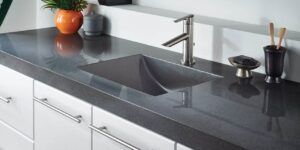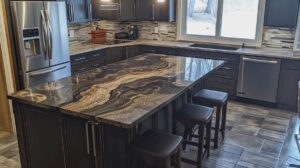Stone countertops have long been a popular choice for homeowners and designers due to their durability, elegance, and natural beauty. Whether it’s granite, marble, quartz, or another type of stone, these countertops add a touch of luxury and sophistication to kitchens and bathrooms. Each type of stone offers unique characteristics and aesthetic appeal, making it possible to find the perfect fit for any design preference.
Purpose of Debunking Myths
Despite their popularity, there are several myths and misconceptions about stone countertops that can mislead potential buyers. These myths often cause unnecessary concerns about their practicality, cost, and maintenance. The purpose of this article is to debunk five common myths about stone countertops, providing you with accurate information to make an informed decision. By addressing these misconceptions, we aim to highlight the true benefits and considerations of choosing stone countertops for your home.
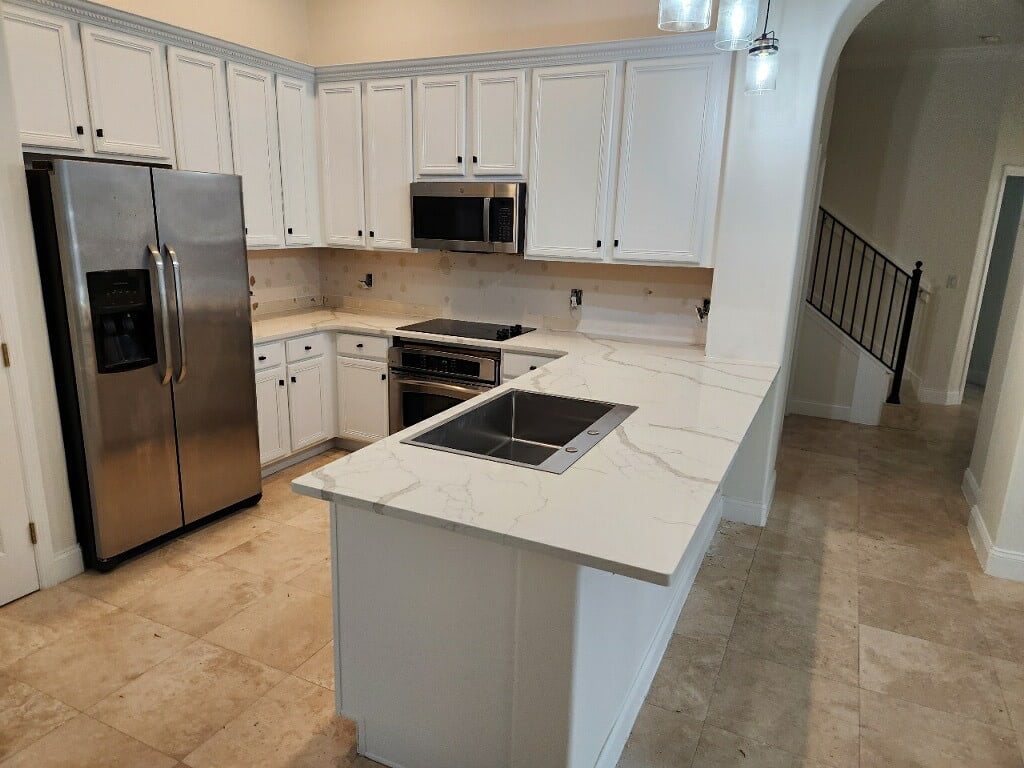
Myth 1: Stone Countertops Are Indestructible
Common Belief
Many people believe that stone countertops, due to their natural hardness and robust appearance, are indestructible. This myth suggests that once installed, stone countertops require no additional care and are immune to any form of damage, whether from daily use, heat, or other kitchen activities.
Reality Check
While stone countertops are indeed durable and long-lasting, they are not indestructible. Different types of stone have varying levels of hardness and resistance to damage. For example:
- Granite is known for its hardness but can still be chipped or cracked if heavy objects are dropped on it.
- Marble is softer and more porous, making it more susceptible to scratches, stains, and etching from acidic substances.
- Quartz, although engineered to be more resilient, can still be damaged by extreme heat or harsh chemicals.
Understanding the specific properties and vulnerabilities of the stone you choose is crucial. Stone countertops can withstand a lot of wear and tear, but they are not immune to damage and require proper care.
Proper Care and Maintenance Tips
To ensure the longevity and beauty of your stone countertops, follow these care and maintenance tips:
- Avoid Harsh Cleaners: Use mild, pH-balanced cleaners designed for stone surfaces to prevent damage from acidic or abrasive substances.
- Use Cutting Boards: Always use cutting boards instead of cutting directly on the stone to avoid scratches.
- Clean Spills Immediately: Promptly clean up spills, especially those from acidic substances like citrus juice, vinegar, or wine, to prevent staining and etching.
- Use Trivets and Hot Pads: Protect the surface from extreme heat by using trivets or hot pads under hot pots and pans.
- Seal Regularly: Some stone countertops, like granite and marble, benefit from regular sealing to enhance their resistance to stains and moisture. Follow the manufacturer’s recommendations for sealing frequency.
- Avoid Heavy Impact: Be cautious with heavy objects to prevent chips and cracks from impacts.
By understanding the realities of stone countertops and following these maintenance tips, you can enjoy their beauty and functionality for many years.
Myth 2: All Stone Countertops Are High Maintenance
Common Belief
A common belief is that all stone countertops require extensive and constant maintenance to keep them looking their best. This myth suggests that owning a stone countertop means committing to frequent sealing, special cleaning routines, and being constantly vigilant against stains and scratches.
Reality Check
While some stone countertops do require more maintenance than others, not all stone surfaces are high maintenance. The level of care needed largely depends on the type of stone you choose. Here’s a closer look at the reality:
- Granite: Granite is relatively low maintenance compared to other natural stones. It is highly durable, resistant to heat, and less porous, meaning it doesn’t stain as easily. Granite countertops typically need to be sealed once a year, but the actual frequency can vary based on usage.
- Marble: Marble requires more care than granite due to its porosity and susceptibility to scratching and etching. Regular sealing and prompt spill clean-up are necessary to maintain its appearance.
- Quartz: Engineered quartz is one of the easiest stone countertops to maintain. It is non-porous, does not require sealing, and is resistant to stains and scratches. Regular cleaning with mild soap and water is usually sufficient.
- Soapstone: Soapstone is non-porous and doesn’t require sealing. However, it can develop a patina over time, which some homeowners find appealing. Applying mineral oil can enhance and even out the color, but this is more about preference than necessity.
- Slate: Slate is also low maintenance, similar to granite. It is non-porous, resistant to stains, and doesn’t require regular sealing. Cleaning is simple, and occasional application of mineral oil can enhance its appearance.
Comparison of Different Stone Types
Understanding the maintenance needs of various stone countertops can help you choose the right one for your lifestyle and preferences. Here’s a comparison to provide a clearer picture:
| Stone Type | Maintenance Level | Key Maintenance Tips |
|---|---|---|
| Granite | Low | Seal annually, clean with mild soap and water |
| Marble | High | Seal regularly, clean spills immediately, avoid abrasives |
| Quartz | Very Low | No sealing needed, clean with mild soap and water |
| Soapstone | Low | No sealing needed, optional mineral oil application |
| Slate | Low | No sealing needed, clean with mild soap and water |
By selecting the right stone for your needs and understanding its specific care requirements, you can enjoy the beauty of stone countertops without the burden of excessive maintenance.
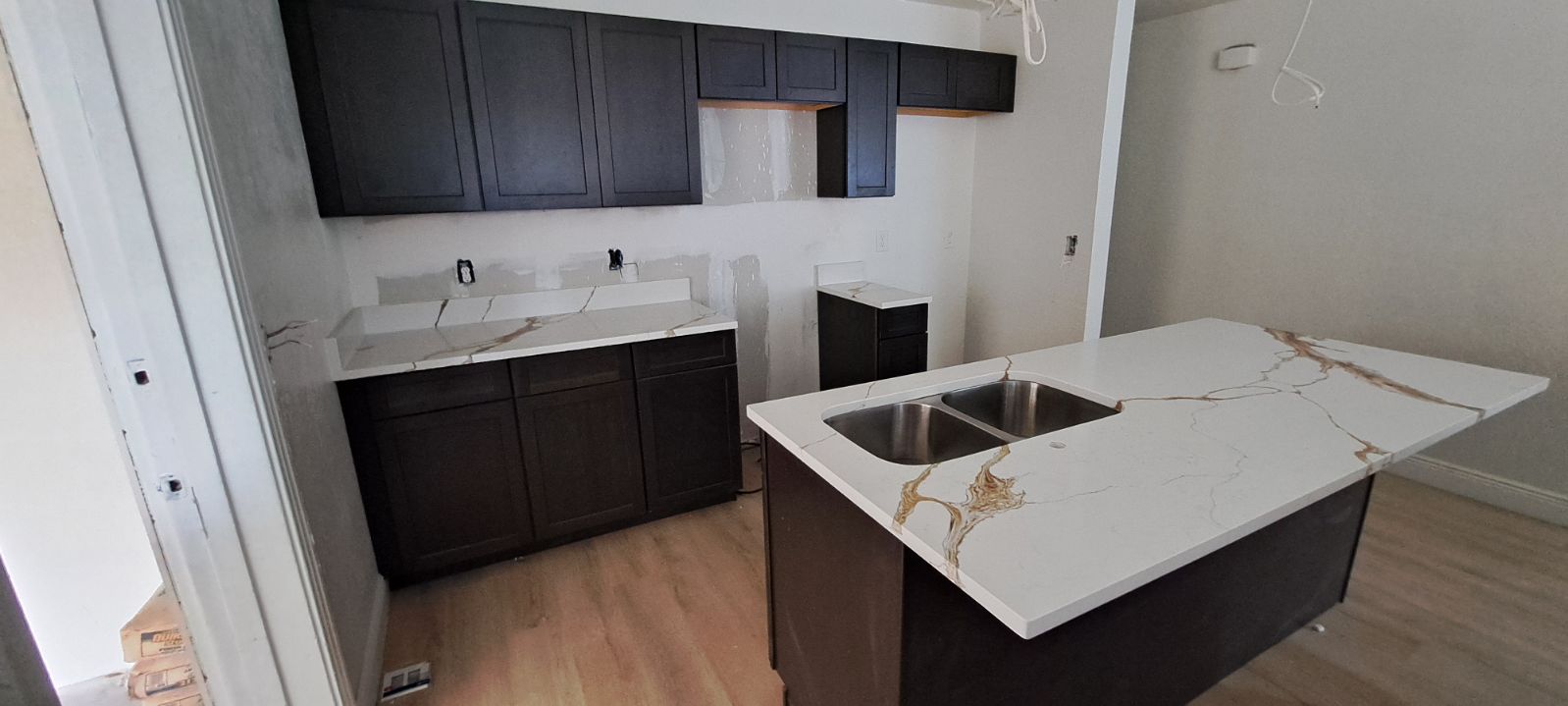

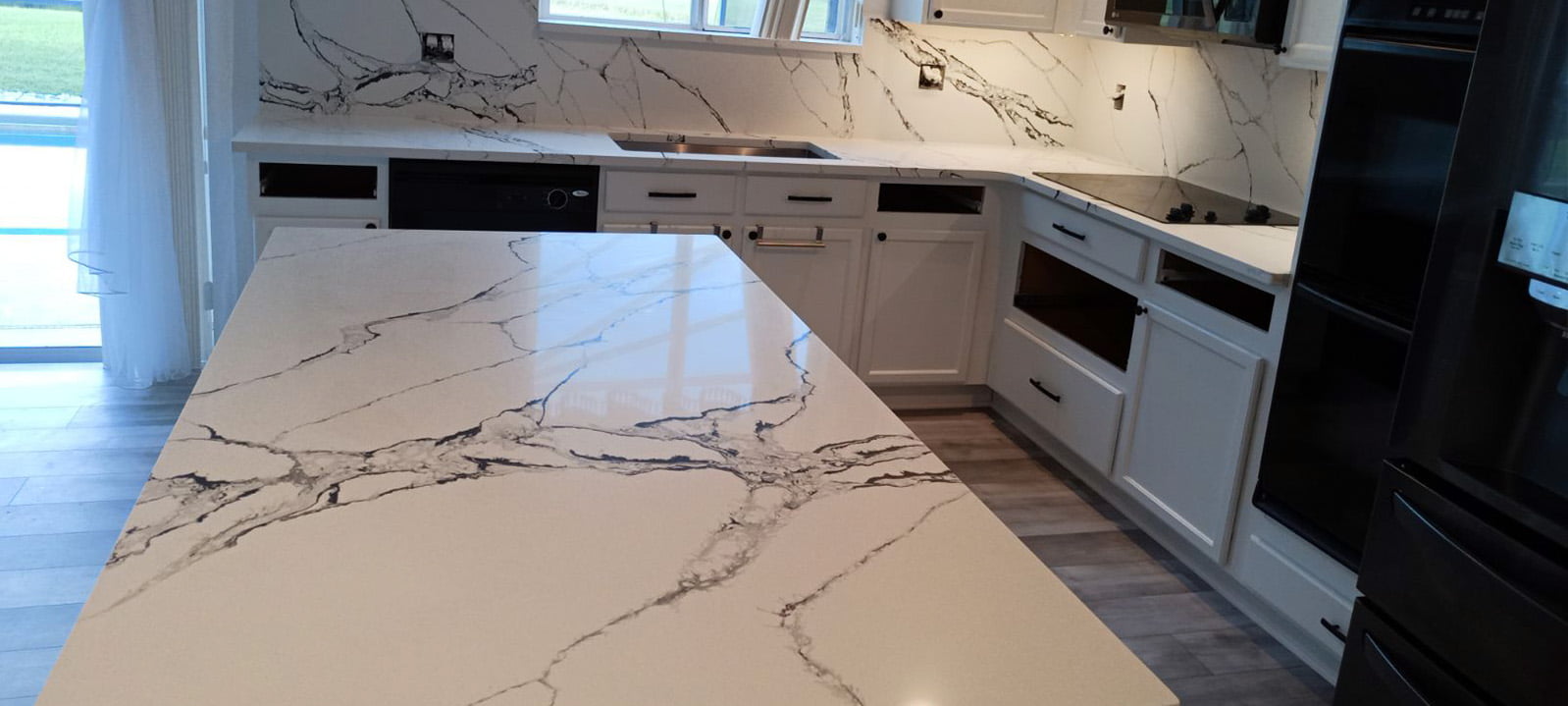
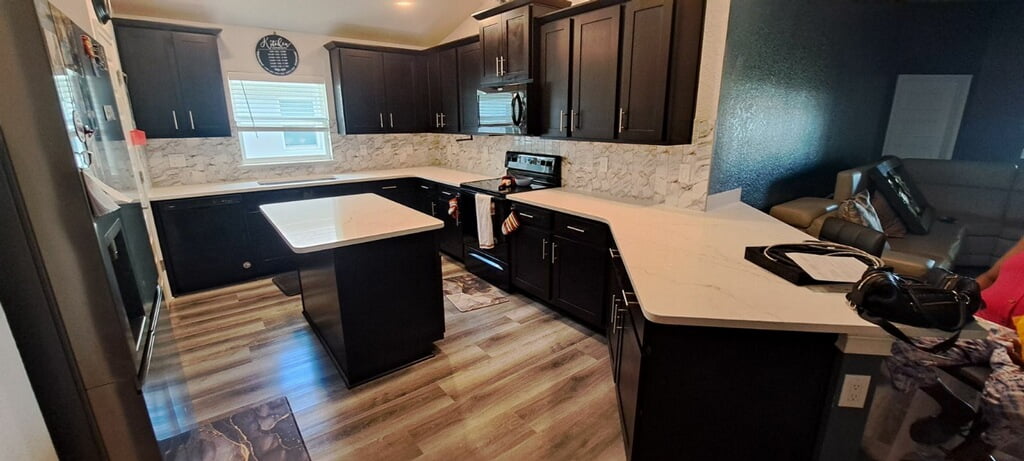
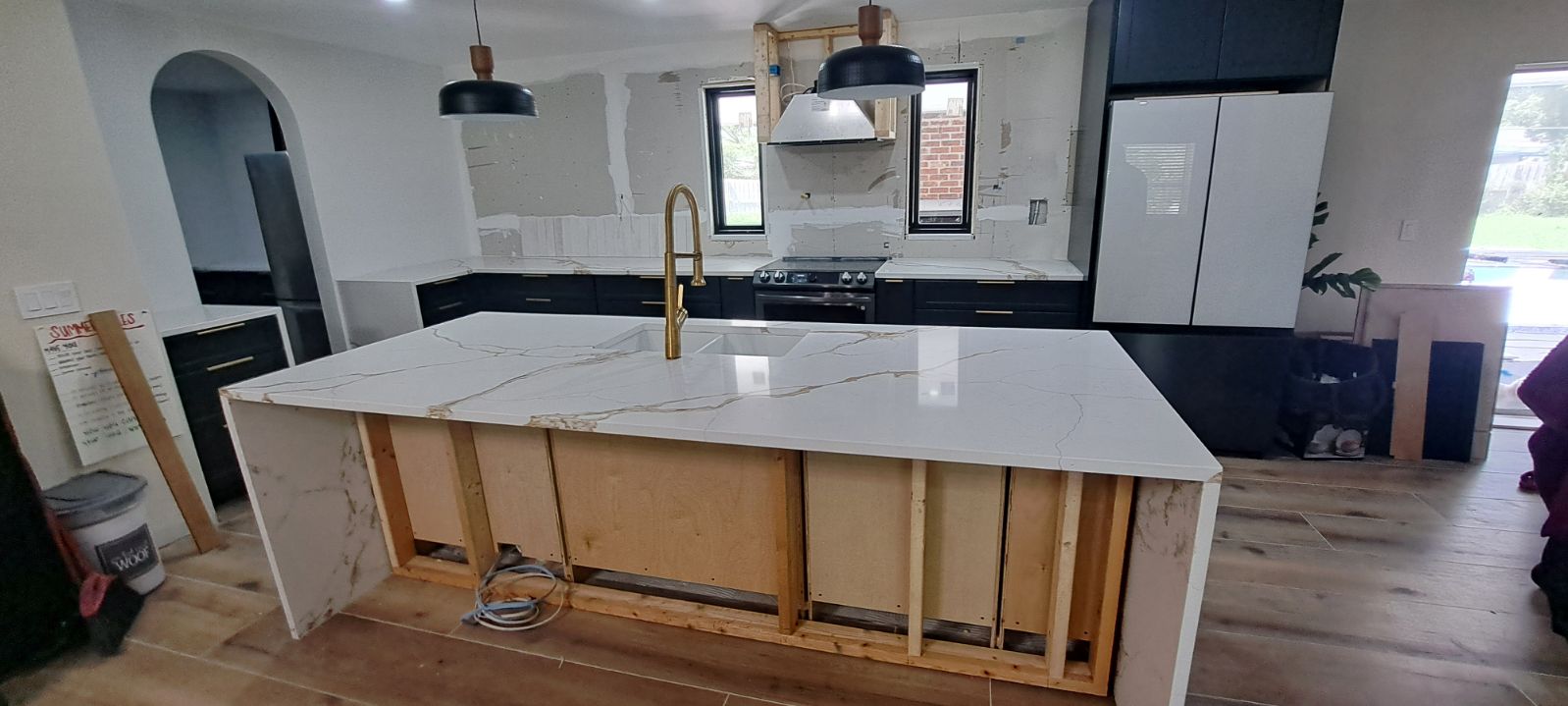
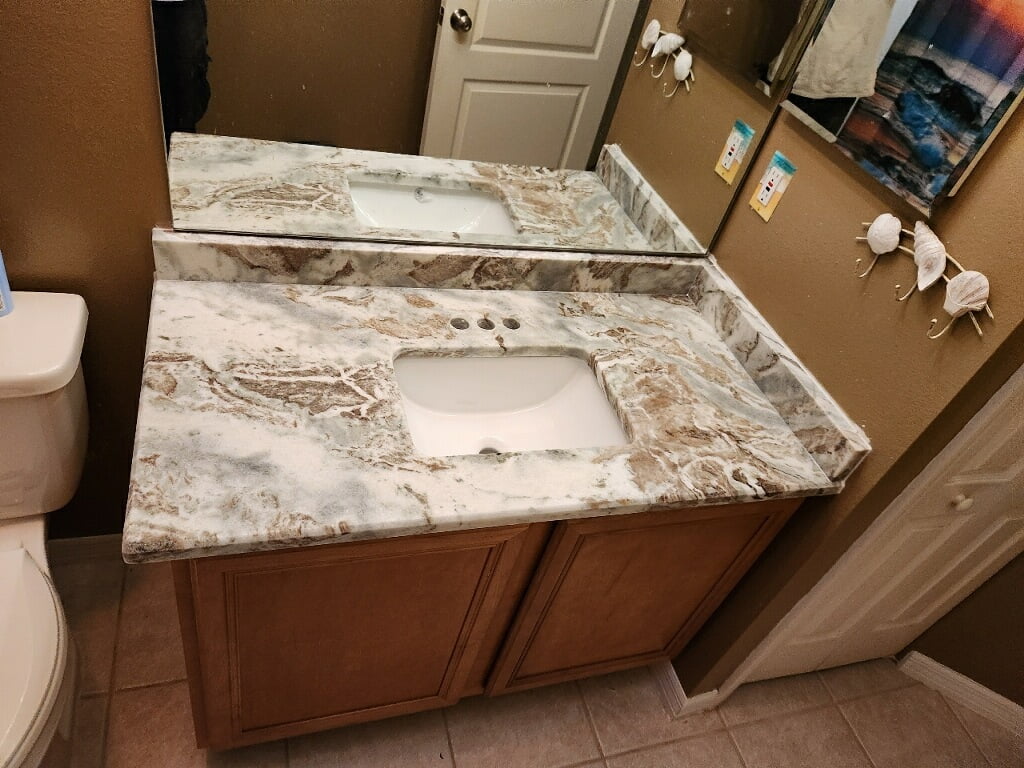
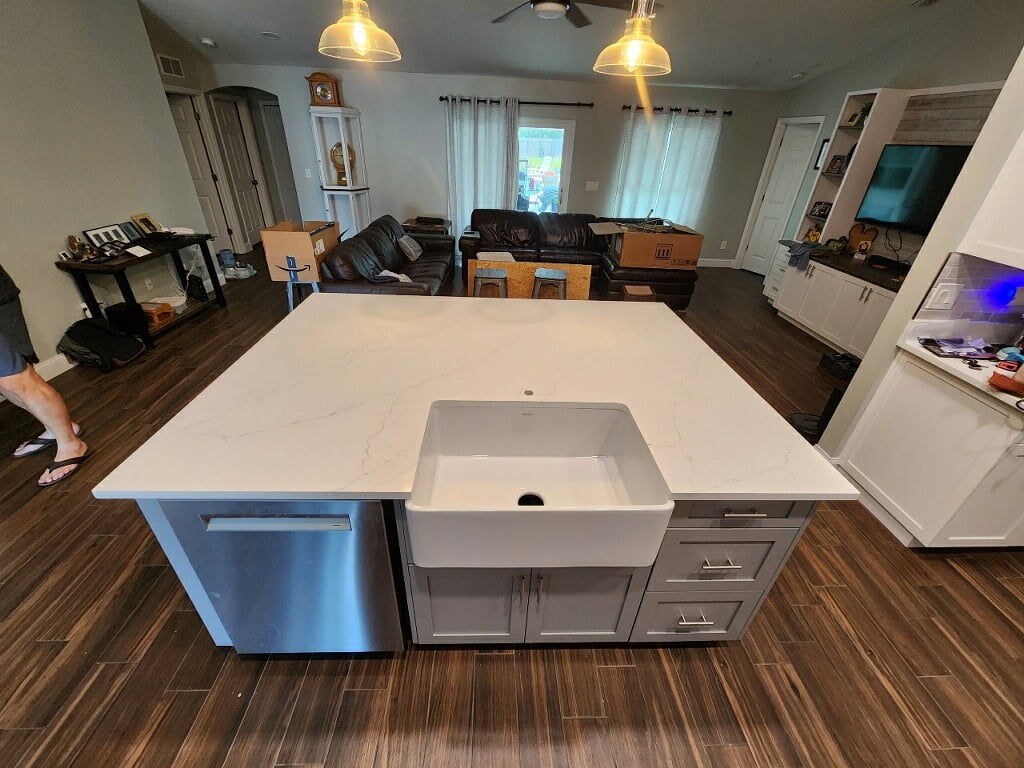

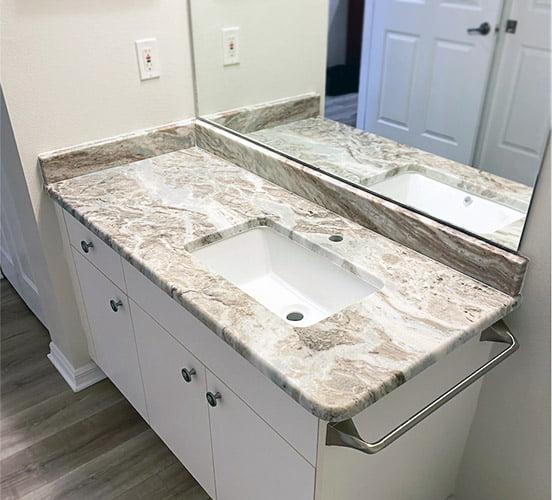
Myth 3: Stone Countertops Are Too Expensive
Common Belief
A widespread belief is that stone countertops are prohibitively expensive, making them an unrealistic option for the average homeowner. This myth suggests that only high-end, luxury homes can afford the elegance and durability of stone surfaces.
Reality Check
While some stone countertops can be expensive, not all stone options break the bank. The cost of stone countertops varies widely based on the type of stone, its rarity, and the complexity of the installation. Additionally, stone countertops can be a long-term investment, adding value to your home and potentially reducing future maintenance and replacement costs. Here’s a breakdown of different factors affecting the cost:
- Material Type: Rare and exotic stones, such as certain marbles and quartzites, can be quite expensive. However, more common stones like granite, quartz, and some marbles are available at a range of price points.
- Thickness: Thicker slabs are generally more expensive due to the increased amount of material and the added difficulty in handling and installation.
- Finish and Edge Details: The type of finish (polished, honed, leathered) and the complexity of the edge profile (bullnose, beveled, ogee) can also impact the overall cost.
- Installation Complexity: Custom shapes, cutouts for sinks and cooktops, and backsplashes can add to the installation cost.
Cost-Effective Stone Options
For those seeking the beauty and durability of stone countertops without the hefty price tag, several cost-effective options are available:
- Granite: One of the most popular and affordable options, especially if you choose a more common color and pattern. Prices can range from $40 to $100 per square foot installed.
- Quartz: Engineered quartz is competitively priced, often between $50 and $120 per square foot installed. It offers the added benefit of being low maintenance and highly durable.
- Marble: While some marbles can be expensive, there are affordable options such as Carrara marble, which typically costs between $40 and $60 per square foot installed.
- Soapstone: Generally priced between $70 and $120 per square foot installed, soapstone offers a unique, rustic look and is relatively low maintenance.
- Slate: An affordable and durable option, slate usually costs between $50 and $70 per square foot installed.
By exploring these cost-effective stone options, homeowners can find a beautiful and durable countertop solution that fits their budget. Additionally, considering factors such as the material’s availability, slab thickness, and installation details can help manage costs without sacrificing quality and aesthetics.
Myth 4: Stone Countertops Are Not Hygienic
Common Belief
A common belief is that stone countertops harbor bacteria and germs, making them an unhygienic choice for kitchens and bathrooms. This myth suggests that the porous nature of some stones allows bacteria to thrive, posing a health risk to homeowners.
Reality Check
While it’s true that some natural stones are porous, making them potentially more susceptible to absorbing liquids and harboring bacteria, proper care and maintenance can mitigate these concerns. Additionally, not all stone countertops are equally porous. Engineered stones like quartz are non-porous and inherently more resistant to bacteria. Here’s a closer look at the realities:
- Granite: When properly sealed, granite becomes resistant to bacteria and moisture. Regular sealing creates a protective barrier that prevents germs from penetrating the surface.
- Marble: Marble is more porous than granite, but with regular sealing and proper cleaning, it can be kept hygienic. Promptly cleaning spills and avoiding standing water can help maintain its sanitary condition.
- Quartz: Quartz countertops are non-porous, making them one of the most hygienic options available. They do not require sealing and are highly resistant to bacteria, stains, and moisture.
- Soapstone: Naturally non-porous, soapstone does not require sealing and is resistant to bacteria. Its dense structure prevents germs from penetrating the surface.
- Slate: Similar to soapstone, slate is non-porous and resistant to bacteria, making it a hygienic choice for countertops.
Hygiene Tips and Practices
To ensure your stone countertops remain hygienic and safe for food preparation, follow these tips and practices:
- Seal Regularly: For porous stones like granite and marble, apply a high-quality sealant as recommended by the manufacturer to create a protective barrier against bacteria and moisture.
- Clean Spills Immediately: Wipe up spills promptly to prevent staining and bacteria growth, especially on more porous surfaces.
- Use Mild Cleaners: Clean countertops regularly with mild soap and water or a cleaner specifically designed for stone surfaces. Avoid harsh chemicals that can damage the sealant and the stone.
- Disinfect Safely: Periodically disinfect your countertops using a mixture of isopropyl alcohol and water (1:1 ratio) or a non-abrasive disinfectant safe for stone surfaces. Spray, let it sit for a few minutes, and then wipe clean with a soft cloth.
- Avoid Cross-Contamination: Use separate cutting boards for raw meat, poultry, and other foods to prevent cross-contamination. Do not cut directly on the stone surface.
- Dry Surfaces: Keep your countertops dry by wiping down surfaces after cleaning or spills. Standing water can penetrate porous stones and create a breeding ground for bacteria.
By adhering to these hygiene tips and practices, you can maintain a clean and sanitary environment on your stone countertops. Proper care ensures that your countertops remain not only beautiful but also safe for all your kitchen and bathroom activities.
Myth 5: Stone Countertops Are Only Available in Limited Colors and Patterns
Common Belief
A common belief is that stone countertops are only available in a limited range of colors and patterns, making them less versatile for diverse design aesthetics. This myth suggests that homeowners may have to compromise on their desired look if they choose stone countertops.
Reality Check
In reality, stone countertops are available in a vast array of colors, patterns, and textures, offering immense versatility to suit any design preference. Advances in quarrying and manufacturing have expanded the range of available options, ensuring that there is a stone countertop to match any style, from classic to contemporary. Here’s a closer look at the variety:
- Granite: Granite comes in a wide range of colors and patterns, from subtle earth tones to vibrant blues and greens. Each slab is unique, featuring natural veining and speckles that add character to any space.
- Marble: Marble is renowned for its luxurious appearance and comes in various colors, including white, black, green, and pink. The distinctive veining patterns of marble can range from delicate and subtle to bold and dramatic.
- Quartz: Engineered quartz is available in an extensive palette of colors and patterns, often mimicking the look of natural stones like marble and granite. Quartz can also be manufactured in solid colors and unique patterns not found in natural stones.
- Soapstone: Soapstone typically comes in shades of grey and black, with subtle veining. Its smooth, matte finish adds a rustic charm to kitchens and bathrooms.
- Slate: Slate offers a variety of colors, including shades of grey, green, blue, and even purple. Its natural cleft surface provides a unique texture that adds depth and interest.
Exploring the Variety of Stone Countertops
Here are some popular stone countertop options and their available varieties:
Granite
- Colors: Black, white, green, blue, red, and more.
- Patterns: Speckled, veined, and solid.
Marble
- Colors: White (Carrara, Calacatta), black, green, pink, and more.
- Patterns: Intricate veining, ranging from subtle to bold.
Quartz
- Colors: Nearly limitless, including solid colors, natural stone imitations, and custom patterns.
- Patterns: Consistent patterns, veined designs mimicking marble, and unique, modern looks.
Soapstone
- Colors: Shades of grey and black.
- Patterns: Subtle veining, smooth texture.
Slate
- Colors: Grey, green, blue, purple, black.
- Patterns: Natural cleft, smooth finishes.
By exploring the wide range of available options, homeowners can find a stone countertop that perfectly matches their desired aesthetic. From the classic elegance of marble to the vibrant hues of granite, and the customizable patterns of quartz, the possibilities are endless.
Conclusion
Recap of Debunked Myths
Throughout this article, we’ve explored and debunked five common myths about stone countertops:
Myth 1: Stone Countertops Are Indestructible
- Reality: While durable, stone countertops are not immune to damage and require proper care and maintenance to stay in good condition.
Myth 2: All Stone Countertops Are High Maintenance
- Reality: Maintenance levels vary by stone type. Quartz and granite are relatively low maintenance, while marble requires more attention.
Myth 3: Stone Countertops Are Too Expensive
- Reality: There are cost-effective stone options available, such as certain types of granite, quartz, and soapstone, making stone countertops accessible to a wider range of budgets.
Myth 4: Stone Countertops Are Not Hygienic
- Reality: With proper sealing and cleaning, stone countertops can be highly hygienic. Non-porous stones like quartz and soapstone offer excellent resistance to bacteria.
Myth 5: Stone Countertops Are Only Available in Limited Colors and Patterns
- Reality: Stone countertops come in a wide variety of colors, patterns, and textures, providing extensive design flexibility.
Final Thoughts on Choosing Stone Countertops
Choosing the right countertop material is a significant decision that impacts the functionality and aesthetics of your kitchen or bathroom. Stone countertops, with their natural beauty, durability, and variety, offer an excellent option for many homeowners. By understanding and debunking common myths, you can make an informed decision that aligns with your needs and preferences.
- Durability and Care: Recognize that while stone countertops are durable, they are not indestructible. Regular maintenance, appropriate cleaning methods, and periodic sealing (for certain stones) will help preserve their beauty and longevity.
- Maintenance Levels: Consider the maintenance level you’re comfortable with. If low maintenance is a priority, quartz and granite are excellent choices. For those who appreciate the unique patina that develops over time, soapstone might be ideal.
- Budget Considerations: Stone countertops can be found at various price points. Explore different stone types and finishes to find an option that fits your budget without compromising on style or quality.
- Hygiene: Ensure that your countertops remain hygienic by following proper care practices. Non-porous stones like quartz are naturally more resistant to bacteria, making them a safe choice for kitchens and bathrooms.
- Design Flexibility: Take advantage of the vast array of colors, patterns, and textures available. Whether you prefer the classic elegance of marble, the bold patterns of granite, or the consistent appearance of quartz, there’s a stone countertop to match your design vision.
In conclusion, stone countertops are a versatile, durable, and aesthetically pleasing choice for any home. By dispelling common myths and understanding the true characteristics of different stones, you can confidently select the perfect countertop to enhance your living space.


